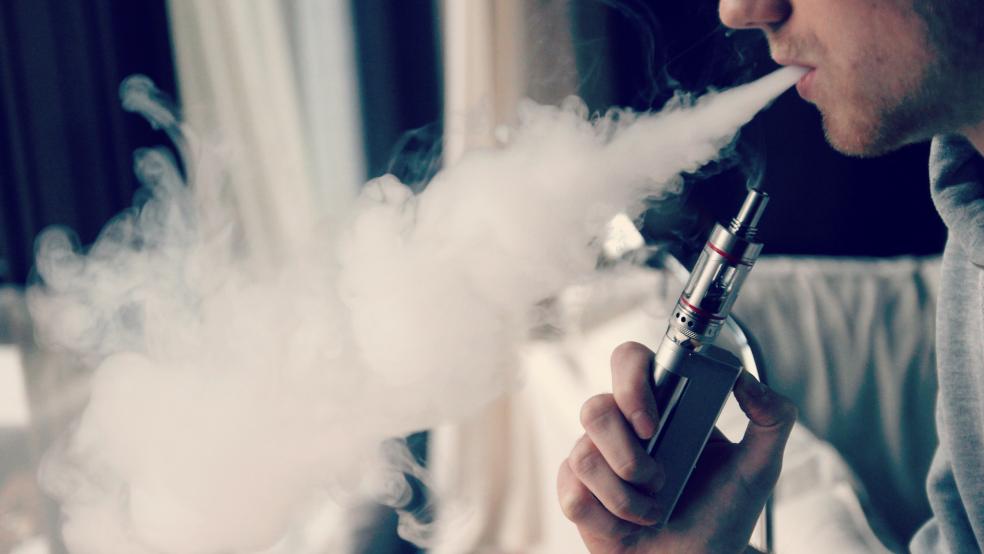The Food and Drug Administration released its long awaited e-cigarette regulations on Thursday. Vapers’ worst fears are confirmed—these regulations will destroy the burgeoning industry.
Though the FDA marketed its regulations as restrictions on minors who purchase tobacco products, the 499-page release contains far more. Perhaps the most ridiculous FDA claim is that these regulations will lead to increased innovation—even though the agency admits that 99 percent of the market will not be able to comply.
As stated on page 267 of the regulations, “FDA believes that [premarket review] (and the deeming rule as a whole) will not stifle innovation but could, instead, encourage it.” This is a nonsensical claim that could only be made by a government agency.
Related: $22 Billion in Savings from Cutting Ridiculous Regulations
Through these regulations, the FDA “deems” that all tobacco products are under its regulatory scope. Hookahs, cigars, pipe tobacco, and electronic nicotine delivery systems (ENDS) were not previously covered under the FDA’s authority to regulate tobacco, which began with the 2009 Family Smoking Prevention and Tobacco Control Act. Now, all tobacco products that were not commercially marketed on February 15, 2007 (the predicate date) are required to gain FDA approval. Tobacco products that were available on the predicate date are exempt from the FDA approval process.
Newer tobacco products will be able to stay on the market if they show that they are “substantially equivalent” to a product that was commercially available on predicated date. Virtually no ENDS were available to American consumers at that time, meaning each currently available vaping product will have to go through the FDA’s other path to market, the premarket tobacco product application process.
These applications, which the FDA acknowledges will cost between $3 million and $20 million (and estimates will take an average of 1,713 hours to complete), are a burden that will be too expensive for practically all vaping companies. This is because vaping is an industry with many small, often local, companies.
Related: Obama’s Avalanche of New Regulations Can Cripple American Business
While the FDA repeatedly claims that its regulations will lead to “significant public health benefits,” what the regulations will actually do is consolidate the sprawling, dynamic vaping industry into the hands of two tobacco giants, Altria Group (the parent company of Phillip Morris) and R.J. Reynolds. These companies are likely the only ones that can afford to navigate the FDA’s lengthy and costly approval process. As Wells Fargo analyst Bonnie Herzog stated after reviewing the regulations, “Although these [regulations] could stifle innovation, we believe this could be a net positive for big tobacco.”
Big tobacco companies are naturally enthusiastic about the coming closures of their small competitors. Without pressure to compete, these large corporations can enjoy the profits of what will become a government-created vaping duopoly. However, consumers lose. Because of the FDA, they will have fewer choices and be robbed of the innovation that has brought vaping from a clumsy oddity to a viable alternative to cigarettes.
The FDA did try to assist what it terms “small-scale tobacco product manufactures” (150 or fewer full-time equivalent employees and annual revenues under $5 million) by giving them additional assistance and time to comply. But this is an empty gesture. No amount of time will change the reality: a company with just a few million dollars in revenue each year cannot afford to spend millions of dollars getting approval for each product that it produces.
Related: U.S. Regulators Ban E-Cigarette, Cigar Sales to Minors
One of the reasons why vaping is rising in popularity is that the products have drastically improved since they first entered the American market in 2007. The initial devices were laughable by today’s standards. They were unreliable, uniform, and unable to replicate the smoking experience that cigarette users crave. Today, because entrepreneurs were able to innovate without government permission, vaping technology is much more advanced, and consumers have a multitude of available choices. Nicotine level, heat, and flavor are all customizable.
One only needs to talk to an ex-smoker who quit by vaping to find out that, the more advanced the device and liquid technology becomes, the easier it is for cigarette smokers to kick their habits in favor of another nicotine delivery system. Policymakers should be doing everything in their powers to encourage this change. The UK’s Royal College of Physicians finds that vaping is 95 percent less harmful than smoking cigarettes. If these new regulations are allowed to fully take effect, they will bring an early death to many people.
The FDA says that it is trying to improve Americans’ health. However, by myopically treating vaping in nearly the same manner as cigarette smoking, the FDA’s regulations will cartelize a growing industry that had the potential to alleviate the many health risks (and associated public healthcare costs) from cigarettes. Now only Congress can save the Americans vapers and smokers from FDA overreach.
Jared Meyer is a fellow at the Manhattan Institute for Policy Research, which publishes Economics 21 where this column originally appeared.






